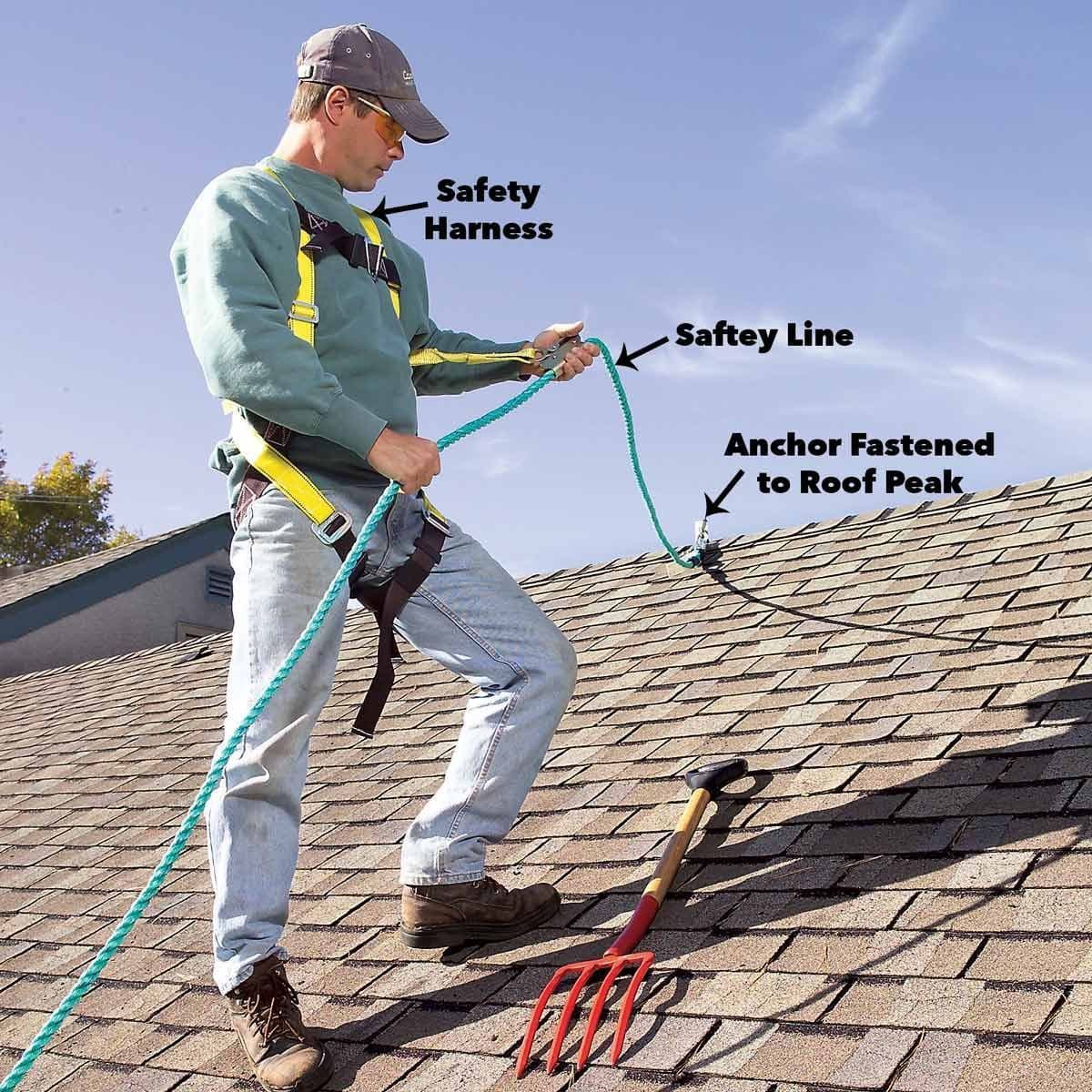SUMMERTIME ROOF SAFETY REMINDERS
Posted on |

As high temperatures push people to the highest points in their homes or workplaces (whether or not they have legal access) it’s important to keep safety in mind. For most parts of the country, the warmer months are also roofing season, making roof safety an even higher priority. Admittedly, being high in the sky is not man’s natural environment. There is no sure proof method for anticipating and avoiding all accidents concerning roofing work. But by following the roofing safety tips below and instituting other safety practices at worksites, rooftops can be a lot safer.
Fall Protection. For construction workers, fall protection is the first, and perhaps most important safety measure. Each year, workers are injured falling from roofs and ladders. To avoid such accidents, always wear a safety harness with a lanyard anchored to a secure point. This way, if you do slip, you won’t fall off the roof. If workers aren’t wearing properly sized body harnesses, then the work area should have guard rails or safety netting.
In particularly precarious situations, consider utilizing a rope or cable lifeline system or even nets and guardrails. Workers on low-slope roofs must be protected from falling by guardrail systems, safety net systems, personal fall arrest systems or a combination of any of these along with a warning line system. Those working on steep roofs should use guardrail systems with toe boards, safety net systems, or personal fall arrest systems.
Use Ladders. Ladder placement is extremely important. Checking the ladder, as well as the rungs and rails for existing or potential damage before you use it. You have to make sure that the ladder is placed on a level and solid ground. Don’t forget to secure the ladder at the top to avoid slipping. Additionally, you have to extend the ladder at least three feet above the edge of the roof at an angle of one foot back for every four feet in eave height. Use both of your hands when you are climbing the ladder.
When you inspect a roof from a ladder, check for danger signs such as cracked or missing shingles, clogged drains and gutters, debris on the roof, severe weathering, worn out roofing materials, and curled shingles. You should also check for damp areas, or leaks, as well as stains on the ceilings. Keep metal ladders away from electrical wires and boxes. When not in use, remove ladders from the work area and lock them together on the ground so that they are not misused by someone who could get hurt.
Wires Safety. Never touch wires with your hands or tools, especially tools made of metal. Remember, electricity can jump from a wire to a metal ladder several feet away, so it’s best to use wooden or fiberglass ladders when working on a roof near wires. And if you must work (or play) near electrical wires, consider calling the power company first. They can inspect the wires and insulate them if necessary.
Roofers Clothes. To avoid roofing accidents, all workers should be wearing helmets, gloves, non-impeding clothing, and work shoes with the appropriate thread. And all of these items should be worn correctly.
Safety is the most important part of every construction site. From heavy machinery to demolition, to heights, there are a number of dangers on any construction project. That’s why it is the contractor’s number one priority to keep everyone safe while they are on site. Your roof is one of the most important parts of your home or commercial building. It provides protection and improves the looks of your property. Because of this, it is important to make sure that it is repaired and maintained properly by a professional roofing contractor. Whether they are working on a residential roofing or commercial roofing, a professional roofing contractor is licensed, well established, insured, and committed to safety. These are the things you need to look for if you are in the market for an experienced roofer who can help you repair or maintain your roof.

Leave a Reply
You must be logged in to post a comment.